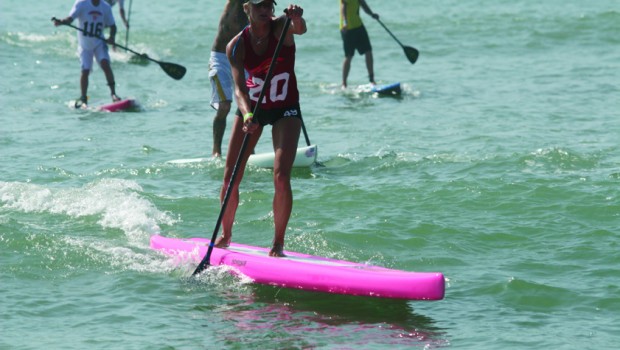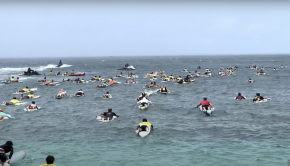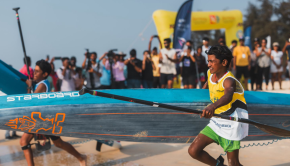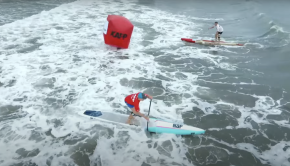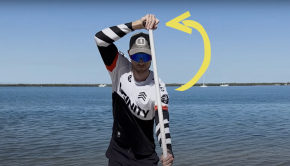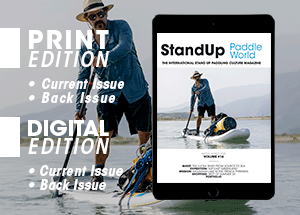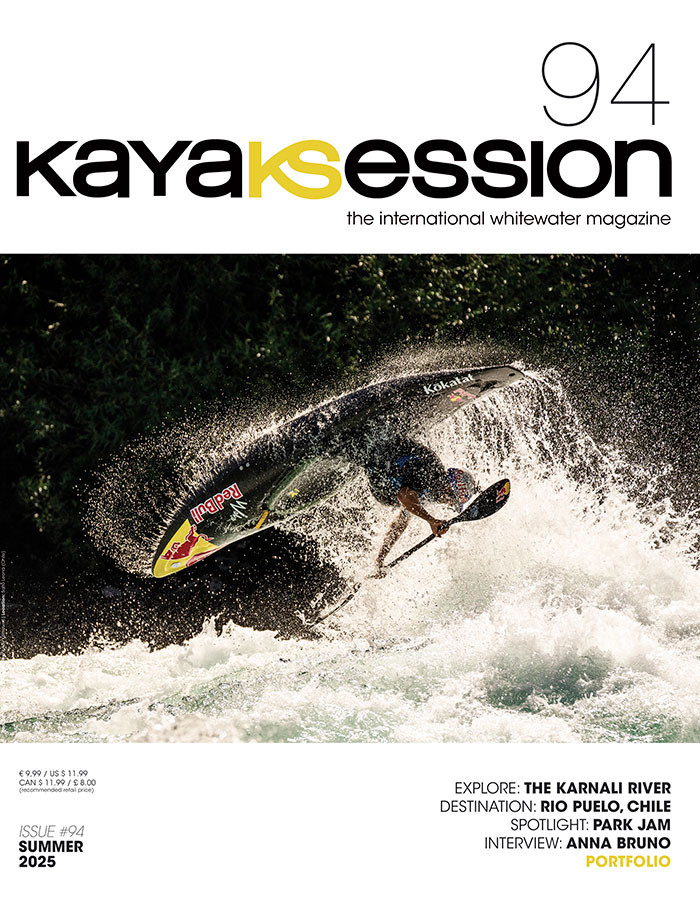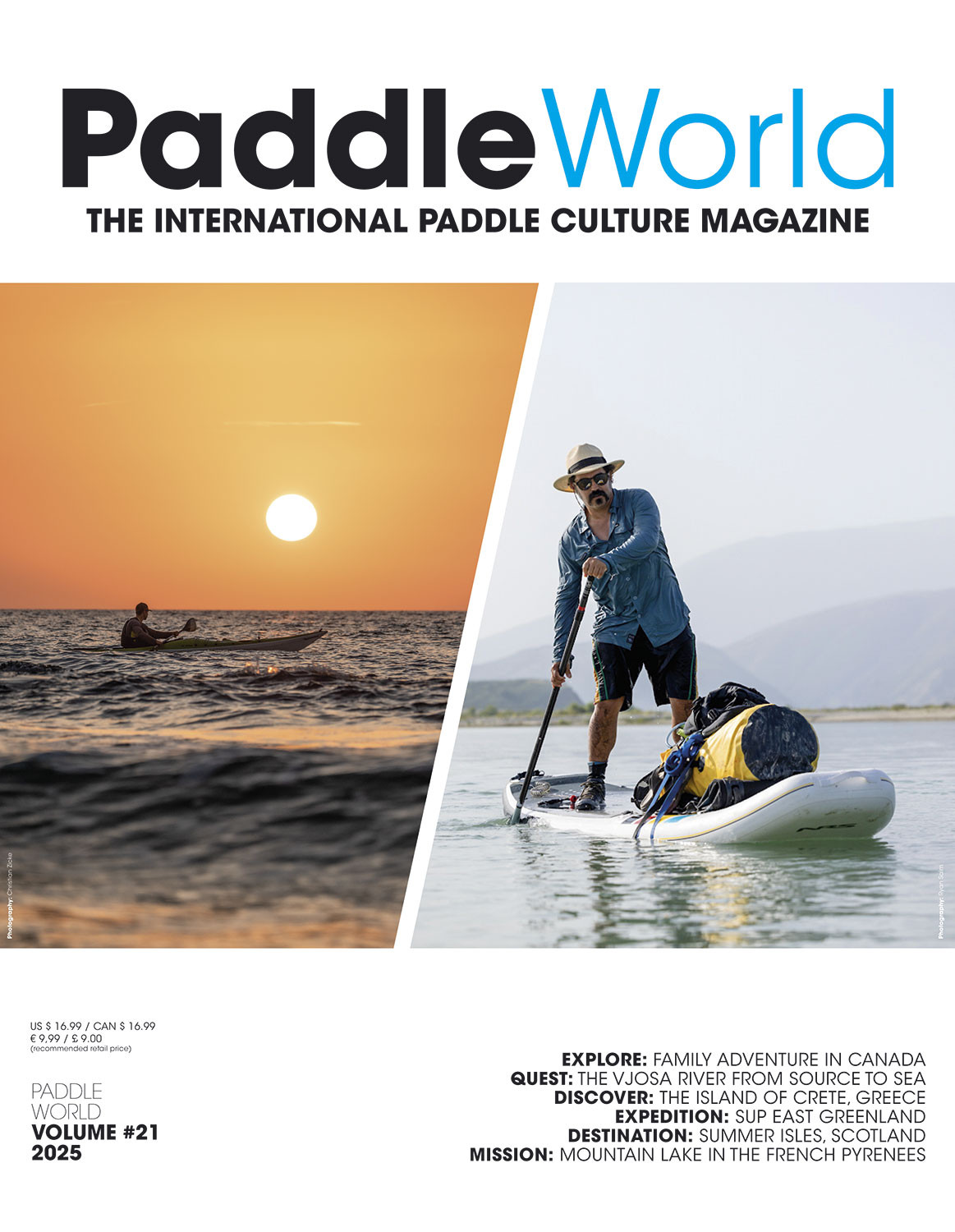The racing Phenomenon
Olympic Kayaker and World Cup SUP competitor Corran Addison looks into the growing sport of SUP racing and its undeniable attraction to people of all ages and backgrounds.
Whether you live in Hawaii, or the Midwest, there is no question that SUP racing is taking paddleboarding by storm. Just a few years ago, race Sup was no more than a blip on the map, a quirky spin off from surf paddleboarding, practiced by no more than a handful of watermen. Their boards were no better than stretched out surf shapes, and training consisted of simply being out and paddlesurfing.
This has changed dramatically, and today the SUP race scene is arguably larger than the SUP surfing one. Part of this, of course, is that racing is more accessible. Great surf spots are limited and often crowded, some animosity still reigns in these spots towards stand up paddleboarders from the traditional “prone” surfers, and, finally, surfing requires dedication and skill to do even on a basic level. Racing does not.
Firstly, anyone who learns to paddleboard could essentially do a race within 5 minutes of having learned the sport. The newbie won’t win of course, but the course and race is possible: point A to point B, generally in almost a straight line. All the participant has to be able to do is stay standing, and make strokes. Secondly, races can be held anywhere with a body of water: open ocean, harbors, lakes, estuaries, rivers, and canals. Even if a body of water is no larger than 50m wide and 500m long, you can hold a race on it.
Much like trail running, people are thus turning out in droves for these weekend events. Any local race can have 50 or 100 participants, and the larger races closer to 1000. Most of these racers are not professional sportsmen, but are rather weekend warriors—people with 9-5 jobs, families and all the commitments that come with both. And these races are an escape from all of that. Friends who paddle together during the week, for enjoyment or to get fit, meet and race each other, creating mini competitions amongst friends within the larger scope of the race itself. They encourage each other, help one another, and of course offer friendly chidings as one or the other comes out ahead when it’s all over.
There is no question that this discipline is a spin off of the fastest growing portion of SUP – rec and touring. Recreational stand up paddling is done on bodies of calm flat water, where the goal is no greater than to simply enjoy being outside and on the water. And while many of the people racing today got into stand up for this very reason, there is an element out there that come from a more dubious past: that of the competitive athlete.
It’s almost a disease. This is the kind of person who has been competitive since he or she was old enough to know what a competition is. There were community leagues, then junior high teams, then more sports in high school and college. Maybe there was an Olympic Games in the mix, or a World Cup event. The responsibilities of life have come along and yet this person cannot stop. Like a junkie trying to kick an old habit that keeps coming back, their addiction is the desire to master a sport, and to compete against others in the process.
A surprising number of top level competitive athletes in SUP racing are in their 40’s. This speaks volumes, for while there is a fast growing demographic in their late teens and early 20’s, competitors today are predominantly in midlife. They are robust, sturdy, seasoned competitors, experienced athletes, and they cannot stop. They suffer incurably from Peter Pan syndrome, and only death will finally, and inexorably stop them. They are past their prime in the sport they were once masters, yet have come together in this demanding, physical challenge of skill, endurance and raw power. They are able to beat, for now, paddlers half their age because of experience, and sheer will power–that drive to be measured against their peers, and ultimately, come out on top.
And yet. And yet.
Slowly making an appearance is the group that will ultimately take the wind out of the sails of these seasoned athletes. They are the next generation, and some are the sons and daughters of the older competition junkies. They are young, and they can smell victory. They too suffer from an incurable disease: the belief that they are invincible and unstoppable. They are what the mid-life athletes once were, except they have chosen stand up paddling as their vocation. They can train harder, they can train more often, and they recover twice as fast from the injuries that bodies ultimately must endure when pushed to the limits. They are too young to know that today’s race pain will be felt tomorrow, with interest, and too hungry to let that pain slow them down.
They are the future of SUP racing. These young energetic athletes are the ones who will take SUP racing to the Olympics, break world record times, and lay the groundwork for future generations. More and more race results read like an inevitable obituary to the older generation. First place, John Doe, 40. Second Place, Sean Smith, 17. Third place, Bill Jones, 42. And somewhere in the top ten is lurking the terrifying reality of things to come, Kyle Doe, 14.
These young hot-blooded athletes are training harder than the older generation ever did. They know more about the body, and nutrition, and how to maximize performance. They have better equipment to hone their skills with, and none of the trappings of life’s commitments. Their vision is not obscured by the comforts one ultimately acquires and desires later in life. They have the drive and passion to win, and all the resources at their fingertips to achieve this goal.
Yet, the interesting thing about racing, and one of its main attractions, is that today it is still so accessible to people who are not seasoned athletes. It remains very much a social event. Sponsors have tents lined up and down the beach, each displaying their wares. Go faster creams for your board, hydrate better potions for your body, and glide better boards targeted at lightening your wallet. Dozens of brands can be found demoing their latest and greatest boards off to the side of the main event – a delight greater than a candy store to a child. Music bands play on a stage, and the aromatic smoke from the official BBQ kitchen wafts through the air.
This is a place where average paddlers can mingle with the sports elite, talking skills, equipment and events of the day or the year. The events are not yet organized into Junior, Adult, and Masters classes. Everyone competes together, and this makes for a common camaraderie and feeling of “oneness” on the shore between events. As a recreational racer you can compare your times with the very best, not only against those of equal standing to yourself. You can see how you’d measure up against an Olympic class athlete on the same course, in the same conditions, and still have bragging rights on Monday if you beat the guys you paddle with all week long.
One of the barriers to entry has been the cost of the equipment, but this is all changing. For a triathlete, accustomed to spending $5000 on a race bike, dropping $3000 on a custom carbon fiber USA-made race board is nothing; but for those who come from say, soccer, where 22 people had to buy just one ball, it’s a little different. This is changing with the arrival of inexpensive plastic “recreational class” race boards, in all three classes: 12’6” Stock, 14’ Stock and Unlimited. With costs under $1000, this has opened the door for many who may have wanted to take part but were unable to due to the cost of equipment.
The designs themselves are also changing rapidly. Just two years ago, a race board was essentially a surfing board with a slight V entry nose. Now the best boards resemble either ocean going surf skis, or sprint kayaks. As athletes and designers from these other two sports enter the SUP world, the 40 years of technology and experience they have is coming with them. Racing on a 1-year old board today would put you at such a disadvantage at the top level as to almost guarantee you exclusion from a podium position. In sprint kayaking, you could race a boat from the 1992 Olympics today, 20 years later, and be competitive. This however has the added benefit for the recreational racer who has no podium aspirations: more and more quality and performance-based used race boards are available on the market as top level athletes dump last year’s equipment for bargains.
There is no question that SUP racing is here to stay. There is equally no question that for everyone from seasoned competitors in midlife to young up and coming athletes, to “the everyman” who comes out on the weekends for the pure social enjoyment of the events, racing has a magnetic attraction. We should expect to see SUP racing in the Olympics within the next half decade, and on your local waterway within the next year or so…if it’s not already there.

